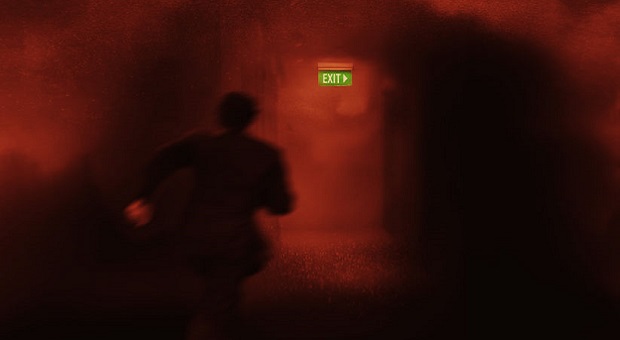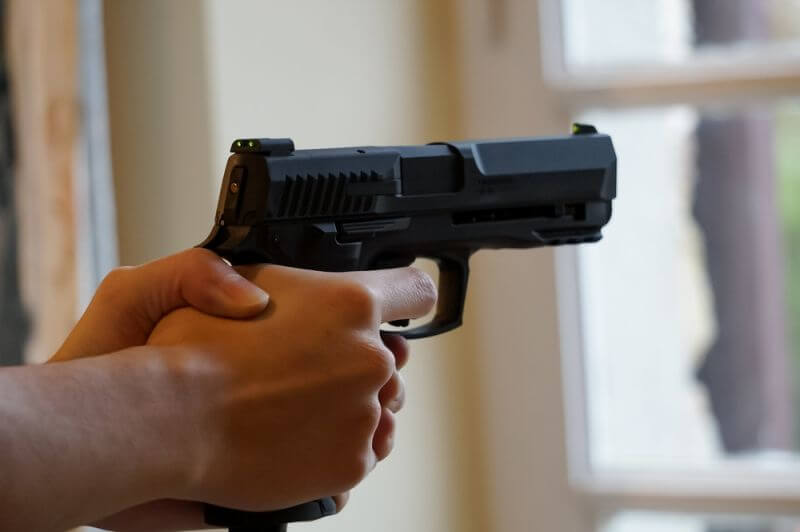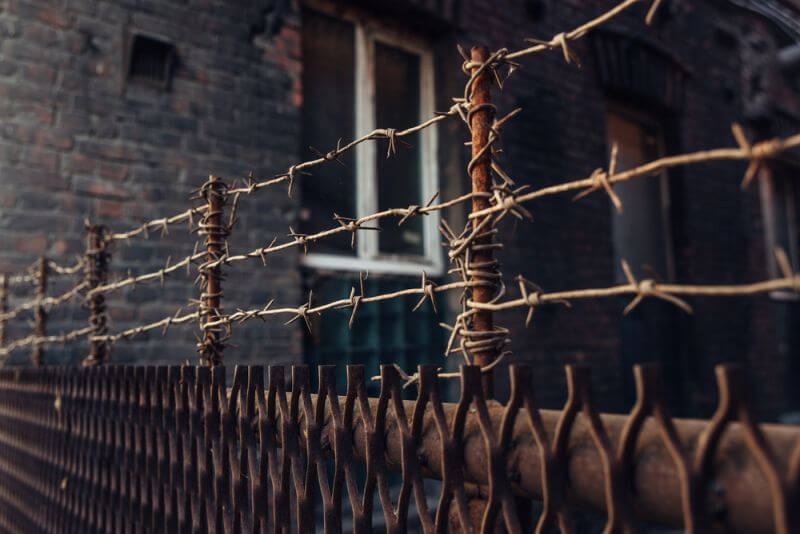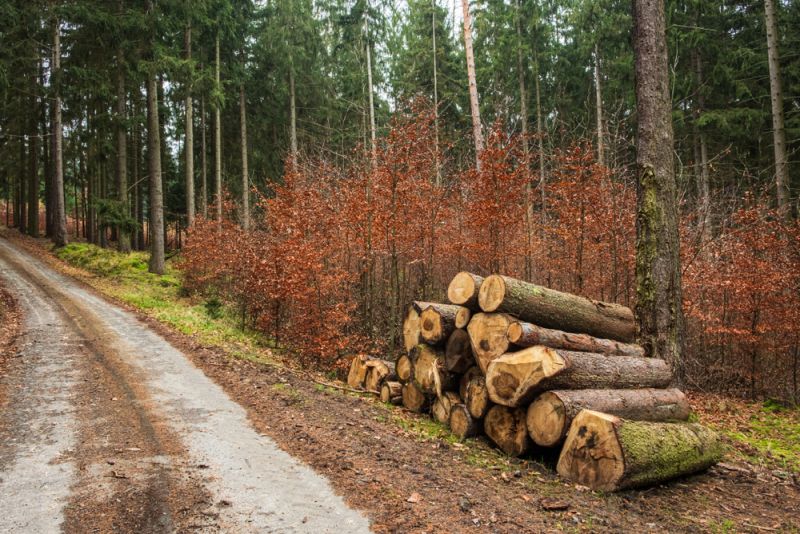Usually, approximately 40% of the fires that burst in populated areas result in death, which could be avoided if people used some other option than staying in their room, hiding in a closet, or even under the bed. If you do not try to escape using a viable plan for that escape, you will find yourself trapped in a burning building.
Did you know that all fires start when you don’t pay attention to flammable surfaces, flammable objects, and heat sources? And a fire cannot happen without the three parts of the fire triangle: heat, oxygen, and fuel?
You need to be realistic about escaping from fire. Movies and TV shows can make it look like you can get out of a fire in a matter of minutes or seconds. In real life, when the building is fully engulfed and smoky, you need more time and it takes much more than expected. Do not give up, and always keep trying.
7 Steps to Prepare for a Fire Escape
- You need a fire escape plan.
Your ability to get out of a burning structure depends upon advance warning from smoke alarms and advanced planning, and everyone in your home should help make the basic fire plan. Households with children need to draw a floor plan of the home showing at least two ways out of each room including windows and doors.
When you have visitors, make sure they are easily aware of your family’s fire escape plan. If you go to other individuals’ homes, be sure that you know their escape plans in the event of an emergency. If they do not have one, offer to assist them in making one.
- Install fire alarms
Walk through your home and inspect all possible exits and escape routes, and mark the spots of each fire alarm. Smoke alarms has to be installed in every sleeping room and each level of your home, and also in the kitchens, garages, attics, basements, furnace and utility rooms.
- Declutter your escape areas
If you live in a small apartment, or tend to have a lot of clutter around, put up signs on every door and window that serve as a fire escape exit. Clear these areas out and keep them clean, or at least make it easier to get out of them in a time of need.
Ironically, many fires start around the holiday season and start around Christmas trees and other decorations that may have faulty wiring or other problems. Most of these decorations are also placed in front of windows that could have been used as a fire escape. So you better get a smaller tree and put it someplace where it will not impede escaping from a fire.
Remember that just because you follow safe fire rules, that does not mean your neighbors will, which means you may still need that window that is blocked by decorations because there will be no way to get through the doors.
If you have security bars on your windows and doors, it is imperative to make sure that these bars have emergency release devices inside so that they can be opened immediately in an emergency. Emergency release devices will not compromise the security of your home, but they will increase your chances of safely escaping from a building fire.
- Have an outside meeting place
Designate an outside meeting place. This could be a neighbor’s house, light post, mailbox or a stop sign, and must be a safe distance in front of your home, and also a place where everyone can meet after they’ve escaped. Mark this meeting place on your escape plan.
- Make your home easy to find for the firefighters
Make sure your outside street numbers are clearly visible from the road. If not, paint them on the curb or install reflective house numbers to ensure that responding emergency personnel can find your home.
If you do not have 911 in your area, make sure that everyone memorizes the emergency phone numbers for the fire department so that anyone can call once safely outside.
- Care for the weak and pets
If your family has infants, older adults, or family members with mobility limitations, have someone assigned to assist them in the fire drill and in the event of an actual emergency. They should be assigned a backup person in the event the primary is not home during the emergency.
If you have family pets, designate certain members of the family to be responsible for them in the event of a fire, and also when you have practice drills. As with children, older adults, or disabled individuals, you must have alternate individuals to get your pets out of the house in the event of a fire.
- Expect the unexpected
Whenever you hear the fire alarm go off be prepared for a real fire. When the fire alarm sounds get out immediately.
Once you are out, stay out, and don’t go back into a burning building. If someone is missing inform the fire department, and let the firefighters do the rescue, as they have the proper skills and equipment.
Why You Must Test Your Fire Plan
Once you create what looks like a viable escape plan, everyone affected by it needs to understand it and what needs to be done. Practicing your fire escape plan at least twice a year will help you solve in advance a lot of problems that a real fire would cause. Let’s make a short assessment of what these problems could be.
- How long does it take to escape from a burning house?
Make the drill as realistic as possible without actually starting a fire. Use timed drills, and always look for ways to make your plans more efficient.
- How are we going to make it if we’re scared?
Allow the children to master the fire escape plan before holding a fire drill, especially if those drills happen at night or when they are sleeping. The objective is to reduce the odds of panic or fear in an actual fire crisis. Tell children that there will be a fire drill before they go to bed, so that they will be more prepared. If they have been practicing with you during both light and dark hours, the actual drill should go smoothly. This will also help them be less frightened when they are suddenly awakened by a fire alarm and it is not a drill.
- Are we going to hear the fire alarm?
Determine during the fire drill whether the children and others can really be awaken by the sound of the smoke alarm. If they are not, assign someone to wake them up as part of the drill and in real life emergency situation.
- How do we know which escape route to choose?
Choose the safest escape route from the house, with the least amount of smoke and heat, and be prepared to escape under toxic smoke conditions if necessary. When you practice your fire drill, everyone in the family should practice getting as low as possible and going under the smoke to your escape exit. If you close doors on your way out, this will help slow the spread of the fire and smoke, giving you and your family more time to get to safety.
- What if the fire and smoke are blocking my escape route?
In some cases, smoke or fire may prevent you from exiting your home or apartment. Prepare for this by to sealing yourself in for safety as part of your home fire escape plan. Close all doors between you and the fire. Use duct tape or towels to seal the door cracks and cover the air vents to keep the smoke from coming in. If possible open a window so that the top and bottom are open to permit fresh air to come into the room. Most importantly, call the fire department to report your exact location. Use a flashlight or a light color cloth at the window to let the fire department know exactly where you are located.
Video firs seen on TualatinValleyFire
How Easy Is to Escape from Tall Buildings During Fire?
If you live in a multi-story apartment building or high rise you should have a copy of the building’s evacuation plan, which should illustrate what the residents are supposed to do in event of an emergency. These plans should be posted in areas where all residents can see and review it. Most well-managed buildings should hold a fire drill at least once a year. In most states it is also required that buildings periodically test their fire safety systems as well. It is to your advantage to participate when your building drills take place.
When looking for an apartment or a high-rise home, look for one with an automatic sprinkler system, as these sprinklers can extinguish a home fire in less time that it takes for the fire department to arrive.
Regardless of the building size, practice is still the most important key for your family to be prepared to respond to a fire alarm. Identify all the exits in your building, and if you are using an escape plan, make sure to mark the various stairwells to use in case one is blocked by fire.
Never use the elevator in a fire! Always use the stairs to get out and make sure to practice using the stairs as part of your escape plan. If someone in your family has difficulty using stairs, plan for this in your contingency plan.
Smoke is toxic and deadly no matter what kind of structure you live in. When you hold your fire drill everyone in the family should practice getting low and going under the smoke to the exit, as we’ve already mentioned. If in a fire, all of the stairways are filled with smoke, stay in your apartment and wait for the rescue firefighters.
If you can’t exit your apartment building due to heavy smoke or fire in the hallway, be sure to call the fire department to report your exact location and gather in a room with a window to await their arrival. Remember what we’ve already said about surviving when the fire is blocking the escape route, and act accordingly.
Keep windows open at the top and bottom, but do not break the window unless rescue teams have arrived and there is no other way to get through the window. Before that time, if smoke enters the room from the outside of the building, you’ll be unable to protect yourself.
7 Tips for a Safe Escape from Fire
Always react as soon as possible when you hear the smoke alarm going off. Your top priority concern should be getting yourself and your family members out safely, and you will finally make it if you keep in mind the following advice:
Get out and take with you only people, not items
When you hear the smoke detector or alarm going off, try to exit your home as safely as possible. Do not try to grab your phone, valuables, or your other important possessions unless they are right by you and you can get them and store them in less than 30 seconds.
If it’s nighttime, yell loudly to get everybody up. You may only have a few seconds to escape safely, so ignore all secondary concerns that have nothing to do with staying alive.
Exit only if the door is safe to use
If you see smoke coming through the cracks of a door, you cannot go out that door because smoke is toxic and a fire is sure to be there. If you don’t see smoke, put the back of your hand up against the door to make sure it doesn’t feel hot. If the door feels cool, then open it slowly and pass through it.
If a door is open and there is a fire preventing you from accessing the room, close the door to protect yourself from the fire. If the door is hot, or there is smoke coming from under it, and there are no other doors to pass through, you will have to try to escape through a window.
Protect yourself from smoke
You need to protect yourself from smoke inhalation. Get low to the floor and crawl on your hands and knees to avoid the smoke, as breathing smoke get people disoriented and even render them unconscious. With this in mind, cover your nose and mouth when you have to walk by or through heavy smoke filled rooms. Place a shirt or a wet rag over your nose and mouth, but only do this if you have the time. Doing this will take a minute or so but it is worth it to be able to filter out the smoke as much as possible.
Keep towels or cloths in prominent places around the house that can be used to cover your nose and mouth if needed. Good places include near doorways so that you can just grab the towels as you leave the room.
Stop, drop, and roll if you catch on fire
In the event that your clothes catch on fire stop, drop, and roll until the flames are out. Rolling around on the floor will smother the fire quickly. Cover your face with your hands as you are rolling to protect yourself from hard objects or flames.
Don’t panic if you are trapped in!
If you are trapped and cannot escape from your home and are waiting for help to arrive, don’t panic! You may not be able to get out, but you can still take some measures to ward off smoke and stay safe. Close your door and cover all vents and cracks around it with cloth or tape to keep the smoke out for as long as you can.
If you are trapped on the second floor do what you can to get yourself to an area where people will be able to hear and see you. You can take a sheet or something else preferably white and hang it out the window to signify that you need help when the first responders get there. Put something down to prevent the smoke from coming underneath the door such as a towel, blanket, or a throw rug.
Don’t jump from the window
A two story house should have an escape ladder that can be throw out in case of a fire. If you do not have an escape ladder, then you may have to go out on the window ledge. If you have a ledge, get yourself out onto the ledge. Always face the building structure when exiting a window on the upper floor. From a second story, you may have to hang down by your arms to get closer to the ground and you can let go and fall to safety. Don’t jump from the window! The chance of seriously injuring yourself or even killing yourself is not worth jumping.
Call 911 and do the headcount
The first thing that must be done once you are outside is to call 911, then do a headcount to see if anybody is missing. Tell the first responders immediately upon their arrival if you are afraid somebody is missing. Likewise, if everyone is accounted for, then let the fire responders know so they will not be sending people in to look for others.
After calling and verifying that emergency crews are coming, it is time to check yourself and family members to make sure that there are no injuries. If there are injuries, do what you can for the injured individuals until the rescue services arrived.
How to Prevent Future House Fires
Is your home prepared for house fires? Ask this question by checking the smoke detectors to ensure that they are functioning and have fresh batteries. Be sure that your windows can be easily opened, and that the screens can quickly be removed in case of emergency. If you have windows with security bars they must have quick release devices to allow them to be opened right away. Everyone in your family should know how to open and close these windows.
If you don’t have collapsible ladders to get down in case of fire, then get them. Be sure that these ladders have been tested by a nationally recognized testing laboratories such as Underwriters in case you need them to get down from the roof.
To prevent your home from catching fire in the first place, here are some safety precautions to take:
- Teach your children that fire is a tool, not a toy.
- Stay in the kitchen when you are cooking, and never leave cooking food unattended.
- Do not smoke in the house. Make sure you put out your cigarettes completely.
- Dispose of any electronics with frayed wires which could lead to a possible fire.
- Avoid lighting candles unless they’re directly in your sight of vision. Never leave a lighted candle unattended.
- Always check that you have turned the gas off before leaving the kitchen.
- Always use a candle lighter or other “gun” shaped lighter instead of match sticks when lighting gas stoves or furnaces.
If you don’t have a fire plan for your home, make time to put up one before it’s too late.
Click the banner below for more!
This article has been written by Fred Tyrell for Survivopedia.










Pingback:Fire Survival: The Escape Plan To Save Your Life | Prepper's Survival Homestead | January 25, 2016
|
Gale Holloway | January 25, 2016
|
Two questions – what do you do when there is no 911 to call due to grid down (and likely no water pressure) and, presuming you escape the fire that destroys your safe place and possibly your prepping supplies, what then???
Pingback:Fire Survival: The Escape Plan To Save Your Life | NewZSentinel | January 25, 2016
|
Pingback:Fire Survival: The Escape Plan To Save Your Life | Bsn Global News | January 25, 2016
|
Pingback:Survival News 01/25/16 | Survival Pulse | Daily Survival & Prepper News | January 26, 2016
|
Pingback:Fire Survival: The Escape Plan To Save Your Life | TheSurvivalPlaceBlog | January 27, 2016
|
TheSouthernnationalist | January 28, 2016
|
◾Always use a gun or lighter instead of match sticks when lighting gas stoves or furnaces.
Priceless.
Fred Tyrrell | January 28, 2016
|
I mean the “gun shaped” candle/barbecue/pilot/ etc lighters. Do not use bullet/pellet/projectile/etc type guns to light gas stoves, furnaces, etc!
Pingback:How To Survive And Escape From A Collapsed Building | Family Survival Headlines | February 24, 2016
|
Pingback:How To Survive A Wildfire | Survivopedia | March 16, 2016
|
Pingback:How To Survive A Wildfire | Prepper's Survival Homestead | March 16, 2016
|
Pingback:How To Survive A Wildfire | | Disasterdefense.us | March 16, 2016
|
Pingback:22 Ways To Use Baking Soda For Your Homestead | Survivopedia | May 4, 2016
|